







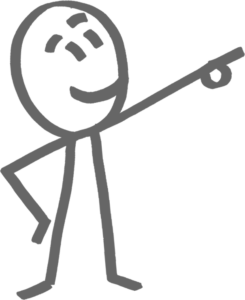

Project Manager, Information Systems
The night before his meeting, Alan decided to turn three pages of heavy text into visuals. “When you are trying to present to stakeholders, they see the final result but often unaware of the process. I felt we needed to allow the stakeholders to empathise with the human aspect of the project and show how we came to these conclusions. Telling them simply wouldn’t be enough.”
![]() The benefits of the The benefits of the Visual Coaching program were fantastic, it gave me a lot of confidence. I’d usually spend hours trying to perfect my work, but the program taught me to be more spontaneous and trust myself. I’m not making a Mona Lisa here. It’s about capturing key messages, not creating a work of art.is program were fantastic, it gave me a lot of confidence. I’d usually spend hours trying to perfect my work, but the program taught me to be more spontaneous and trust myself. I’m not making a Mona Lisa here. It’s about capturing key messages, not creating a work of art.
The benefits of the The benefits of the Visual Coaching program were fantastic, it gave me a lot of confidence. I’d usually spend hours trying to perfect my work, but the program taught me to be more spontaneous and trust myself. I’m not making a Mona Lisa here. It’s about capturing key messages, not creating a work of art.is program were fantastic, it gave me a lot of confidence. I’d usually spend hours trying to perfect my work, but the program taught me to be more spontaneous and trust myself. I’m not making a Mona Lisa here. It’s about capturing key messages, not creating a work of art.
After a trip to K-mart to get a new sketch pad, Alan decided that the story could not be shown as steps on separate pages, it needed to flow. Alan diverted his attention to a roll of plotting paper, unrolled a section on the family’s small living room floor and began to draw. For the next few hours he kept adding icons and text. Only when he took the poster to another room for colouring and unrolled it, he realised it was five meters long. “I wasn’t sure if the meeting room we booked was big enough to display it”.
His teammates, the facilitators, the clients were amazed when they saw this work. “I think I surprised myself too.” It took Alan over four hours to create his largest sketch but the result was worth it. The poster helped the team to prove the concept of work and persuade the stakeholders in the importance of the project to help secure resources and funding.
![]() That’s the power of visual facilitation.
That’s the power of visual facilitation.
“It enabled the people we were talking to, to understand not just the concept but how we came up with it. It gave the stakeholders a really good understanding of the story behind it. That’s the power of visual facilitation. You don’t have to sit there and read, you don’t have to be told, the visual is filling the gap for you.”

The ‚giving’power of Visualisation
Alan Kurrle
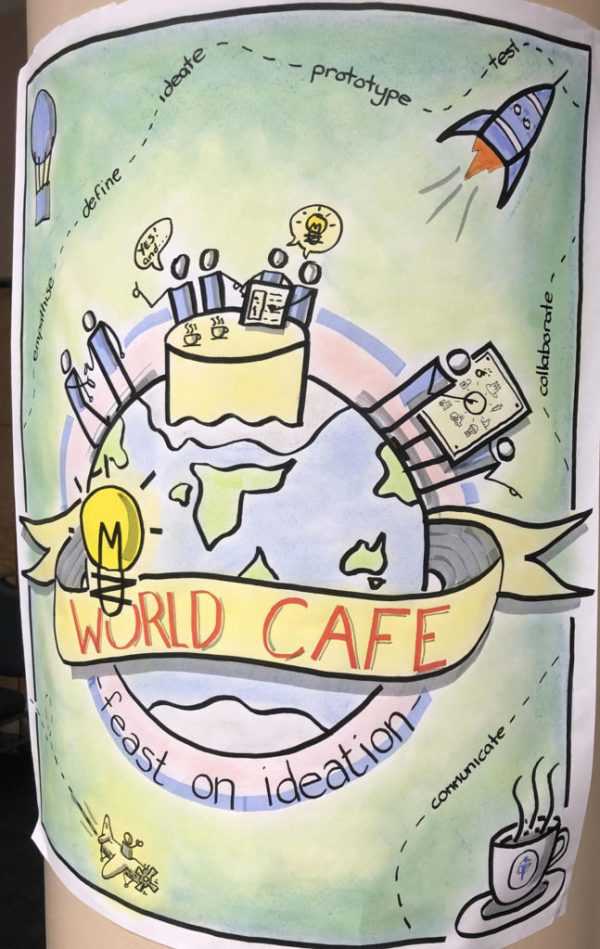
Alan feels visualisation helped humanise the project. “From my perspective, we needed to illustrate people’s feelings, to put some empathy in there. The poster captured our “why” – we are in the medical profession to care for the patient.”
Alan first came across bikablo® at one of the workshops, where he saw our Melbourne trainer John Hibble scribe. It looked impressive, and Alan wanted to give it a go. “I believe you need to keep yourself challenged in different areas. I love learning new things.”
The tagline “everyone can draw” really appealed. A visual person, Alan always felt he lacked skills to express his ideas on paper.
Alan attended two-day Bikablo® Fundamentals course in October 2018. He absolutely loved it and wanted to continue practicing but felt life got in the way. No longer feeling confident, Alan saw Visual Friends’ ad for a new, online Visual Coaching program and jumped right in.
“The benefits of the Visual Coaching program were fantastic, it gave me a lot of confidence. I’d usually spend hours trying to perfect my work, but the program taught me to be more spontaneous and trust myself. I’m not making a Mona Lisa here. It’s about capturing key messages, not creating a work of art.”
Alan found the small group of six a perfect size and the Slack channel a great way to share and learn from each other. “The program challenged us and kept us accountable.”
Alan’s five-meter poster was the result of this newly found confidence. He couldn’t be more pleased.
Alan is very passionate about his work, a big part of which is transforming hospitals into more human places. Under his management, his workplace is the second hospital in Australia to introduce a la cart room service for patients, where meals are individually cooked to order. He feels fortunate to be in a position to make a difference and happy these new skills help facilitate this.
“I’m lucky to be employed in a person-centric workplace. Our customers, the patients are right outside of our offices. It’s all about constantly improving the service we can provide, what experience we can change to actually make a positive difference to people. I want to continue to practice my skills as a part of my role. I plan to use it to visualise the strategic purpose and vision within my departments, so my team is able to be reminded of our direction every time they pass by.”
Alan is still adamant that he’s not good at drawing.
“I still maintain that I cannot draw, but what I can do is use basic shapes to create a visual. By choosing basic shapes and putting them together I can represent what I’m trying to say rather than replicate it.”

The article was written by Natalia Tsygankova. Natalia has always loved words and talking to people. She has put that passion to good use and has been sharing people’s stories in the community radio, TV and print media for the last 10 years. Natalia is also a big fan of true storytelling events and regularly volunteers at the most famous one – The Moth, interviewing the winner. You can hear her own story of moving to Australia from Russia in 1999 here. Natalia believes that everyone has a story – So what’s yours? Contact her today to share your story.


Problem solver. Product maker. Team builder. Visual Facilitator
Nuzakat admits, she’s never been a fan of plain text.
![]() I’ve always loved colour and have been interested in doing things differently, in such a way that leaves something in people’s memories. You might not remember the text on the board, but you will remember a picture. A picture will stay with you for much longer and it helps everybody to be aligned.
I’ve always loved colour and have been interested in doing things differently, in such a way that leaves something in people’s memories. You might not remember the text on the board, but you will remember a picture. A picture will stay with you for much longer and it helps everybody to be aligned.
As a developer, later a business analyst and then an iteration manager, Nuzakat found client meetings with text only bland and inefficient. “I was going to client sites trying to understand their vision and needs, and each time there would be just phrases on the board. I longed for something more.”
But Nuzakat didn’t think she was good at drawing, so she shied away from it.
Working on a project at MYOB a few years later, Nuzakat was impressed with the visualisation culture there at the time. “I’d walk around the office and see these lovely images. Everything was visually presented rather than just written on the board, so I thought I’d better learn how to do it!”
A lot of people mentioned bikablo® and Nuzakat wanted to give it a go. Unfortunately, her then employer didn’t believe it was a necessary consultant skill. “I disagreed because as a consultant you are constantly facilitating and recording information, and you’d want your clients to be aligned and leave with a great image, rather than with text you can forget. But maybe I didn’t put up a good business case.”
Nuzakat went on with her work, but the thought of upping her visualisation game wouldn’t let on. “I’d hold these meetings and attempt to draw, but I was too slow and not good at it, and people would ask me to just write it down.” She approached her management again, and again her request was rejected. She did it anyway.
Nuzakat took annual leave and spent
two days learning bikablo® technique with John Hibble in March 2018.
“I always thought I could only draw stick figures, but I found bikablo® easy to learn.”
After leaving consulting Nuzakat went to AGL, where she again began to sneak visualisation in her work. “I started by creating visualisations of user journeys and task lists. I’d put them up and once I heard a couple of comments, I began to sign my posters and include information on how to learn the technique.” Nuzakat inspired a few of her colleagues who followed suit and did training with Visual Friends.
Having come full circle, Nuzakat is now championing visualisation at MYOB, the place that inspired her to begin her visualisation journey in the first place. After a restructure, the culture in the company has changed and visualisation is no longer front and centre, something that Nuzakat is trying to turn around.
She helped promote visualisation ‘lunch and learn’ sessions and volunteered to help organise Visual Friends Meetup. Nuzakat was also an MYOB host for the first-ever Australian Visualisation Conference held last year. It was a great success and VizConf 2019 is returning to MYOB in October 2019.
“At MYOB we are always looking for new ways to do things, and a lot of people here are very visual.”
Although Nuzakat’s new role doesn’t allow her to practise visualisation daily, she is not giving up. For now, she practices by creating visual summaries of the business books she’s reading, attends the meetup and looks forward to the next Visualisation Conference. Nuzakat is also considering becoming a Visual Friends Leader, an initiative for those Visual Friends students who are passionate about the craft and want to champion it at their workplace.
Visualisation is now firmly part of her career regardless of her future roles.
![]() It’s so impactful. You see these lovely colourful images up on the wall, you can take the information in one glance and understand the message without a ton of words. I think it’s really inspiring and motivating that anyone can do this, you just have to try. It’s simple, it’s concise, it’s beautiful to look at and it’s a much better way to convey a message.
It’s so impactful. You see these lovely colourful images up on the wall, you can take the information in one glance and understand the message without a ton of words. I think it’s really inspiring and motivating that anyone can do this, you just have to try. It’s simple, it’s concise, it’s beautiful to look at and it’s a much better way to convey a message.
Do you want to start a visual revolution in your workplace? Come to one of our courses, attend a meetup or join us on slack. Keen to learn more – have a look at other stories on our website and listen to the Visual Friends radio.

The article was written by Natalia Tsygankova. Natalia has always loved words and talking to people. She has put that passion to good use and has been sharing people’s stories in the community radio, TV and print media for the last 10 years. Natalia is also a big fan of true storytelling events and regularly volunteers at the most famous one – The Moth, interviewing the winner. You can hear her own story of moving to Australia from Russia in 1999 here. Natalia believes that everyone has a story – So what’s yours? Contact her today to share your story.



Agile Coach and Trainer/Visual Facilitator/Extended DISC Consultant AGL Energy Visual Friends two-day course, October 2014
Christiane first saw Bikablo® when meeting Marcel through her daughter’s school. She was intrigued. At the time she was looking to add something else to her toolkit and Bikablo® seemed like a perfect fit. “I felt limited in my ability to communicate complex concepts, and I also didn’t feel like I was having a lot of fun in my role.” Christiane attended one of the first Bikablo® courses offered in Melbourne, back in 2014.
Not only did Christiane learn a new skill that allowed her to inject some fun into her every day work, the course changed the trajectory of her career, allowed her to meet some amazing people, be part of unique events and play a role in changing the company culture at her workplace.
Christiane’s biggest insight from the Visual Friends course was how easy it was to learn. “It’s a technique that anyone can pick up. If you can draw a stick, you can draw Bikablo®.”
![]() “Visualisation helps break down communication barriers, removes ego and takes away a lot of tension and bias. It makes people really happy. Drawing and playing with colour reminds us how to be free, creative and unburdened, it helps us reconnect to ourselves and be present in the moment.”
“Visualisation helps break down communication barriers, removes ego and takes away a lot of tension and bias. It makes people really happy. Drawing and playing with colour reminds us how to be free, creative and unburdened, it helps us reconnect to ourselves and be present in the moment.”
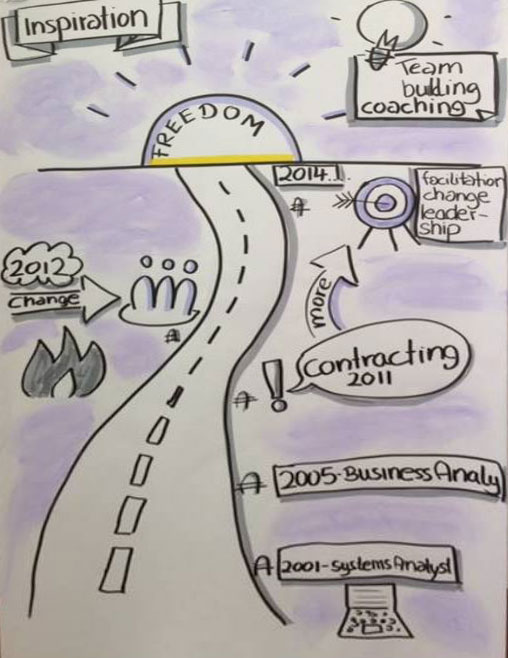
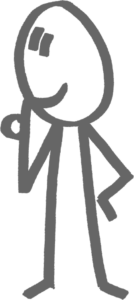
Visual Friends training final poster
Christiane Anderson
She began to put her new skill to use immediately. Christiane would ask teams to allow her to visually record their meetings or capture retrospectives. Her hand drawn posters began to appear all over the office. “I got a lot of really positive feedback. People felt the drawings added a different dimension to what was being said and helped them remember the key messages. At first the leaders were concerned scribing would be distracting, but instead it helped people focus on what was communicated.
For the next four years, Christiane worked with Marcel van Hove, Visual Friends Co-founder, scribing for various conferences, breakfast events and even international speakers.”It gave me an opportunity to meet some amazing people and have access to events I would not have otherwise had access to.” A particular highlight was scribing for Barry O’Reilly, the author of Unlearn and Lean Enterprise. He used her drawings in his marketing and training materials.
Christiane also did lots of drawing at work and began to play a role of a visual coach helping teams with visual templates, metaphors and concepts.
Not only did Christiane learn a new skill that allowed her to inject some fun into her every day work, the course changed the trajectory of her career, allowed her to meet some amazing people, be part of unique events and play a role in changing the company culture at her workplace.
Christiane’s biggest insight from the Visual Friends course was how easy it was to learn. “It’s a technique that anyone can pick up. If you can draw a stick, you can draw Bikablo®.”

Barry O’Reilly in front of Christiane’s work
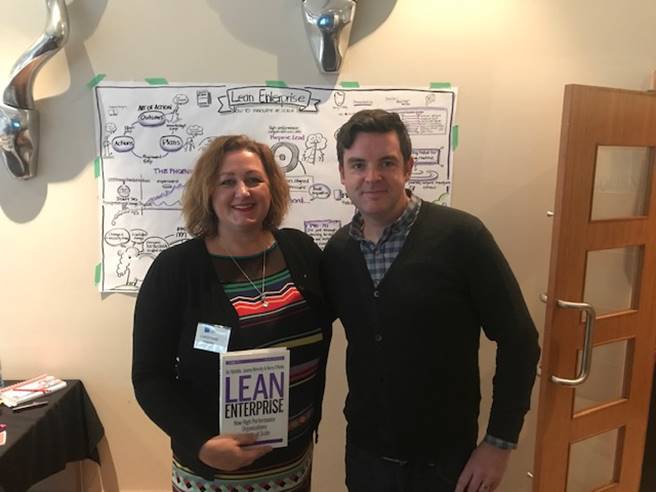
For the next four years, Christiane worked with Marcel van Hove, Visual Friends Co-founder, scribing for various conferences, breakfast events and even international speakers.”It gave me an opportunity to meet some amazing people and have access to events I would not have otherwise had access to.” A particular highlight was scribing for Barry O’Reilly, the author of Unlearn and Lean Enterprise. He used her drawings in his marketing and training materials.
Christiane also did lots of drawing at work and began to play a role of a visual coach helping teams with visual templates, metaphors and concepts.
Not only did Christiane learn a new skill that allowed her to inject some fun into her every day work, the course changed the trajectory of her career, allowed her to meet some amazing people, be part of unique events and play a role in changing the company culture at her workplace.
Christiane’s biggest insight from the Visual Friends course was how easy it was to learn. “It’s a technique that anyone can pick up. If you can draw a stick, you can draw Bikablo®.”

The article was written by Natalia Tsygankova. Natalia has always loved words and talking to people. She has put that passion to good use and has been sharing people’s stories in the community radio, TV and print media for the last 10 years. Natalia is also a big fan of true storytelling events and regularly volunteers at the most famous one – The Moth, interviewing the winner. You can hear her own story of moving to Australia from Russia in 1999 here. Natalia believes that everyone has a story – So what’s yours? Contact her today to share your story.



Business Agility / Transformation Coach
![]() As a facilitator, I consider it really important to capture and present the participants’ content in a way that’s valuable to them. There are many workshops out there, but how you are going to make yours different, how will you make people’s content and ideas memorable? Through a better workshop, you get a better outcome so you can increase productivity, energy and communication in an organisation.
As a facilitator, I consider it really important to capture and present the participants’ content in a way that’s valuable to them. There are many workshops out there, but how you are going to make yours different, how will you make people’s content and ideas memorable? Through a better workshop, you get a better outcome so you can increase productivity, energy and communication in an organisation.
We could have almost replaced Biunca’s story with her brilliant poster. She created it in response to our interview request to talk about the role of visualisation in her work. “I wanted to get a bit of perspective down on paper about why I thought visualisation was important. Because at the end of the day, what better way to talk about the visualisation than to visualise it.”
Biunca came across Visual Friends last year and did both the Basic and Advanced Visual Storytelling course. But her visualisation journey started well before that.
She always enjoyed drawing. “I was probably always the kid in class who’d prefer to draw in the corner, rather doing math or writing. “
As Biunca moved into her working career the skill proved to be useful. “I found it was often easier to sketch out the problem and talk to people through the sketch to get a good understanding of the issue.”
As Biunca’s career progressed from facilitation to Agile ways of working, her visualisation skills continued to change too. Sketching moved from a notepad onto a wall, Biunca began to use Sketchnoting and even scribed for a few conferences. “I realised there’s more to learn about visualising effectively. I was also wondering if I was really maximising the technique.”
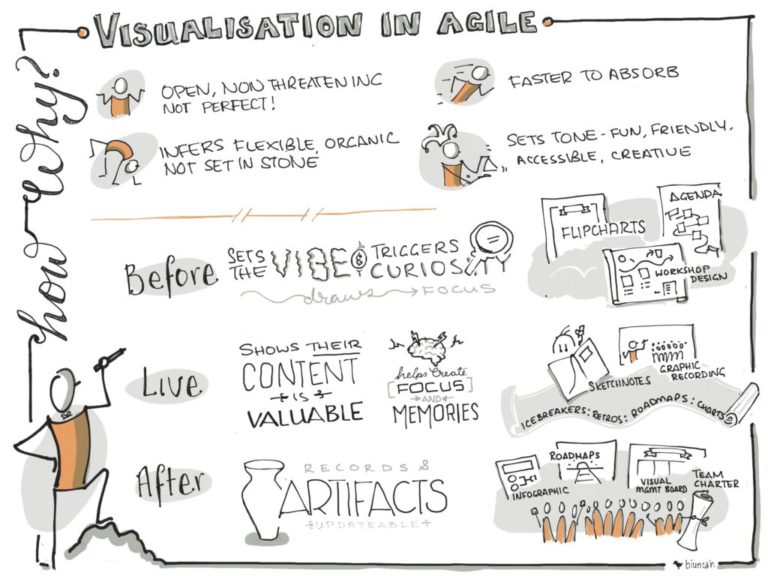

Visualisation in Agile
Biunca Hooper
Enter Visual Friends.
One of the personal challenges was visualising effectively in a larger format. Biunca thought sketching on A4/A5 didn’t present a lot of risks and wanted to challenge herself. “I wanted to understand how to fill a big flipchart, how to balance the real estate on a page and quickly add hand-drawn images. Those things I found really valuable.”
Learning about the best way to hold a marker, how to get ink consistency to form your pen and how to streamline your poster handwriting was unexpected but welcome knowledge. “I often get compliments now about my handwriting on posters, the course really improved my technique.”
To further refine her skills Biunca followed up the bikablo® fundamentals class with the Advanced course.
![]() It provided a different perspective – bringing visualisation to life through storytelling, a powerful tool from the facilitation perspective.
It provided a different perspective – bringing visualisation to life through storytelling, a powerful tool from the facilitation perspective.
Biunca believes the course changed her visualisation style and allowed her to use the skill in her work with more confidence. “If you looked at the before and after photos my work, you’d definitely see the difference in style, and probably the number of flipcharts and visualisations that I was doing increased as well.”
The Visual Friends course also allowed Biunca to strengthen her facilitation and Agile coaching tool kit. “I guess what the course enabled me to do is to really apply my skills in a much broader range of workshopping activities.”
Biunca runs workshops all the time and uses visualisation on a daily basis. She truly believes it contributes to a better-quality outcome. “As a facilitator, I consider it really important to capture and present the participants’ content in a way that’s valuable to them. There are many workshops out there, but how are you going to make yours different, how will you make people’s content and ideas memorable? Through a better workshop, you get a better outcome so you can increase productivity, energy and communication in an organisation.”
Creating value for her clients is one of the most satisfying parts of Biunca’s work, and visualisation really supports that. “I love seeing participants excited about the way their content has been captured. It’s a takeaway item that people can keep or share with others, something they are proud of. For me, it’s one of the most important things.”
Biunca believes visualisation supports culture change in an organisation. “People tend to interact in front of visualised content, you have more conversations, it creates more energy. If you go from a very stark environment with very few posters or post-it notes around to a visual way of working where there are containers and objects for people to put content into, really awesome sketches of workshops showing progress and highlighting things, it indicates a real change in the style of communication.”
Biunca would love to see more organisations take on visual ways of working as the benefits speak for themselves. “It’s around encouraging everyone to visualise because I think people get so caught up in trying to communicate through words alone, through e-mail and ineffective meetings. How do we bring in visualisation as a key communication and collaboration tool, not a sideline or executable outcome? How do we do it by design? Literally.”

The article was written by Natalia Tsygankova. Natalia has always loved words and talking to people. She has put that passion to good use and has been sharing people’s stories in the community radio, TV and print media for the last 10 years. Natalia is also a big fan of true storytelling events and regularly volunteers at the most famous one – The Moth, interviewing the winner. You can hear her own story of moving to Australia from Russia in 1999 here. Natalia believes that everyone has a story – So what’s yours? Contact her today to share your story.

Zhi is an Agile Coach at Teamworx, an Agile Coaching and Training consultancy based in Auckland. A big part of his work is to help teams increase their flow through visualising their work. He works at Mercury, an Energy company in New Zealand.
Like many Visual Friends students, Zhi didn’t grow up loving drawing. “As a kid, I was never good at Art. In fact, I used to get D’s or C’s at Art classes.” Now Zhi is using visualisation techniques daily and even coaching others. It’s one of the most powerful tools in his Agile Coach toolkit.
Zhi saw Bikablo® in action by accident. At a strategy offsite he was attending, the scribe happened to be a Bikablo® practitioner. The simple and striking visual language piqued Zhi’s interest. At the time, he was already practising Sketchnoting, which is essentially processing information, distilling it, then expressing the concepts using a combination of simple imagery and visuals. “People seemed to enjoy meetings with sketching and were more involved.” However, seeing the Bikablo technique opened doorways for taking his practice further. Zhi was really keen to learn this visualisation language made such an impression. In 2018 there was an opportunity to attend a two-day Visual Friends course in Auckland, and Zhi jumped right in.
The self-taught technique of Sketchnoting had given Zhi a foundation for visual thinking. “The two days with Visual Friends allowed me to apply that background knowledge and sharpen my drawing technique. It was fantastic to have two days of practical experience.” Zhi found Bikablo® accessible and impactful at the same time. “One of the main principles was to simplify things to the max, and I learnt to use simple lines and shapes as opposed to stressing out about creating a perfect picture.” Zhi also credits the course with increasing his confidence to sketch in front of a group and facilitate a conversation. “People often comment on the quality of the drawings, they love it.”
New skills lead to new career opportunities. Zhi ran two major graphic recording sessions at his workplace. One was for a Finance team which invited him to scribe at their strategy off-site after seeing his work. “The typical stereotype of accountants is that they “by-the-book” and focused on numbers, instead of conversations. I felt that was not true when I started drawing and explaining the purpose of visualisation to the team. When they understood how useful it is to summarise key points and present them as a picture, when they saw graphic recording in action, they got really interested in the visual way of working.”
Video of the graphic recording at the Finance Offsite:

That experience was a special one for Zhi. “My work as an Agile coach is to teach people new ways of collaborating, new ways of visualising their work and how to have really good discussions. Visualisation has enabled me to do that outside of IT which has been a real highlight. “
Zhi’s most proud moment so far has been using the skills learnt through Visual Friends to record the history of his company, Mercury, at a recent event. He was invited to scribe at an offsite where the discussion evolved around the past, present and future of the geothermal fields (Mercury is an energy company and geothermal fields are one of the energy sources). Two long days, 16 hours of graphic recording and 20 meters of paper later, the scroll was complete.
“It was amazing to record our journey and put it to pictures. Ours is the company that really values NZ heritage and to be able to represent the history of the place, to see people being so engaged in the conversation was such an honour for me.” Zhi’s recording was laminated and sent to all of Mercury’s geothermal field sites around New Zealand. “We displayed the large sketches in the offices to make it easier to explain what each Geothermal field is about. It’s just amazing.” Zhi believes his visualisation contribution is enhancing the way teams work at his workplace. “My scribing for the Finance department is a good example of how visual culture is slowly becoming not just an Agile and IT thing. Lots of other departments have become interested in visual ways of working.”
Zhi is confident using visualisation is going to enhance the way organisations communicate. “Visualisation makes the connection so much richer as opposed to talking to someone or reading a message off a list. People perceive the message better. You can have a better-quality conversation.” You can find out more about Zhi’s work here.

The article was written by Natalia Tsygankova. Natalia has always loved words and talking to people. She has put that passion to good use and has been sharing people’s stories in the community radio, TV and print media for the last 10 years. Natalia is also a big fan of true storytelling events and regularly volunteers at the most famous one – The Moth, interviewing the winner. You can hear her own story of moving to Australia from Russia in 1999 here. Natalia believes that everyone has a story – So what’s yours? Contact her today to share your story.


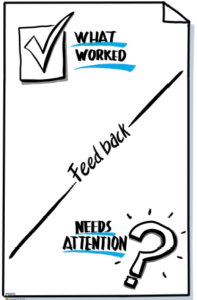
You are a facilitator. You are busy. A workshop is coming. Sounds familiar? Well Visual Friends are here to help.
As a facilitator, after you have designed your workshop you may consider how visualisation can support your event. Visual Friends are releasing a set of visual posters in the bikablo style that could help.
These are A0 size layouts that can be pre-printed to save you time to focus on content over layout.
We’d love to hear your feedback and perhaps any poster styles that you’d like to request.
All the best, the Visual Friends Team.

A simple frame holds the information together.
Just one box more. A headline and a simple frame holds around your text holds your insights together. Download


Great poster template to summarise your next brain storming. By the way, let everyone think alone first then consolidate together. This creates more diversity. Download
Just add the topic you investigate together on the top and hand out post-it to cover the question mark! Have fun together. Download
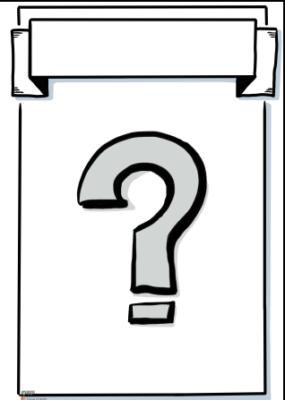
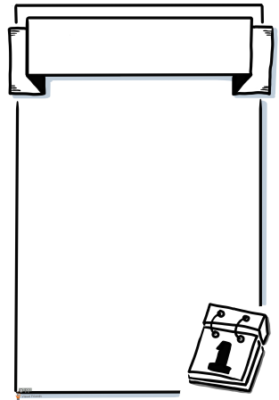
Use this template to look back or plan the next actions ahead. Use the SMART (Simple, Measurable, Achievable, Relevant and Time based) writing for clear defined actions. Download
Ask your team for feedback after the workshop. Use Post-its and make them write! Place this flip chart at the exit of your workshop so that people can leave anonym feedback if they choose to. Download
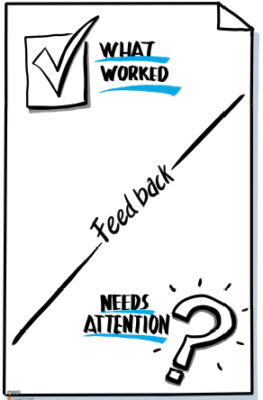
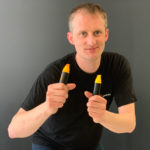
Marcel combines agile team coaching with visual thinking. Marcel believes that a group of people drawing together on a whiteboard can change the world. He loves high-performing teams and therefore coaches teams every day.



Agile Coach for AGL
I don’t know about you but I see many companies who put a lot of whiteboards inside their offices and I am not sure yet that they know how to make the best use of them.
Today’s guest is Christiane Anderson, she works as an Agile Coach for AGL. AGL is one of the major energy providers in Australia. AGL was founded in 1837 and was the company that lid the first gas lamp in Australia in 1841. Today they are listed as one of top 50 companies on the Australian Stock Exchange (ASX).
This episode is about Christiane’s journey from discovering the bikablo® drawing technique. We look at how she started small by showing the value of visual facilitation to AGL before it took off and inspired others through the whole organisation.
Additionally, we talk about visual facilitation in the context of an agile business transformation and what changes are needed in the human behaviours when working in an agile environment. We explore how agile coaching and life coaching can help each individual in the company to come along on an agile journey.
We provide you with a couple of tips about how you can light a fire of change and lead it in your organisation. This episode is about how you can start small and become bold.
I hope you enjoy this conversation with Christiane from AGL.

Marcel combines agile team coaching with visual thinking. Marcel believes that a group of people drawing together on a whiteboard can change the world. He loves high-performing teams and therefore coaches teams every day.



Head of Agile Transformation
I would like to ask you a question! Can you image you walk into a company and tell everyone to change the way they work? Maybe even question their values? Or find a new vision for what they would like to achieve? That is what an agile transformation often is about. Today I speak to David Landry. He works as a principal consultant at Elabor8 and he has facilitated an agile transition with his college Andrew Thorpe at a Melbourne University using the bikablo® drawing technique.
The way they have facilitated this agile transformation it is quite disruptive in itself. They have banned PowerPoint from the first day they arrived and introduced the bikablo® drawing technique using it instead of PowerPoint from the first meeting to all the team and project meetings.
He shares his experience with drawing live in front of other people. I hope you enjoy this conversation with David Landry from Elabor8.
You can’t draw or think that you can’t facilitate a meeting on a whiteboard yet? I would like to invite you to come to my next bikablo® visual facilitation training and learn the simple drawing technique that so far more than 1000 people worldwide have learnt.
Marcel: So welcome everybody. I’m here with David Landry from Elabor8. You are a principal consultant at Elabor8?
David: Yes, I’m a principal consultant at Elabor8. That’s correct.
Marcel: Let’s start with – What is Elabor8?
David: Elabor8 is a company that has been in business now for five years. It’s been steadily growing. Just recently, we opened up an office in Sydney. Elabor8 is a leader in agile development practices specializing very much around business analysis. We’re now taking a leading role in Agile Transformation and leading large organizations in their Agile Journey, like the one we’re going to talk about today. Their agile journey focuses initially on how they engage with business across all technology and other areas. So Agile Transformation has become a specialized area in Elabor8. We’re looking at the whole software development and how agile is used there. We want to connect business and technology groups together.
Marcel: And if I’m right, agile transformation means you take people on a journey to transform the way they work before and more engaged. What does an agile transformation mean in this context?
David: I think that’s a good question. Agile comes with a lot of baggage in many organizations today. Many organisations have a view that agile is just an adoption of a lot of ceremonies. We, Elabor8 take organisation through the underlying principles, if you like, the “science” behind the fundamentals of agile. So we look at Lean and Kanban. We look at particular methodologies, Scrum and the Scaled-agile frameworks and talk about what does that mean to the way your teams work, how do the various parts of the organization engage and most importantly, what’s the difference for leadership within those frameworks.
Marcel: And when we look at this university where you work now, I think, with a colleague together, what is his name?
David: Andrew Thorpe.
Marcel: Yeah.
David: He is acting as Scrum Master, Business Analyst and a mentor across the day-to-day working of the agile groups.
Marcel: So can you describe the scenario a bit? What are you doing here at this university?
David: So I’m going to take a step back and talk about how we got involved in the first instance: We were approached by a department within a university that has been trying to implement a new system for their operation and their engagement across the university. And it had been struggling over the last 12 to 18 months. We had a meeting with the senior directors and they decided to take an entirely different approach. So we introduced them into the “thinking” of taking an agile journey, but we didn’t really describe the Agile processes. We didn’t really get heavily into what that means, other than to say do you want to try something entirely different. Would you like a lot more transparency and openness and building a different communication? Of course, the answer is very simple, yes, yes and yes. So that’s set the context of how we started to work with the leadership and the teams. What was surprising is that while people were being taken out of their comfort zone, they were all equally ready for something different to take place. So we soften our conversation around agile practices and talked more about leadership and transparency. And this is where visualization stepped in.
Marcel: So how do you use now visual facilitation? I think Andrew came to my class maybe a half year ago. I think it was in July. Now it’s December and you were at my class in September. How does visual facilitation has now been playing in this agile transformation?
David: There were two things that we stipulated right from the beginning. The first was to get all the teams together into a combined planning session. Secondly, traditionally conversations with the team were based on PowerPoint presentations. So we decided that there would be no PowerPoints and that we would use Visual Facilitation. Our approach was that we prepared sheets with just simple words and diagrams drawn upon them and then during the facilitation, planning session we developed and captured further information during the facilitation. The key point that we were making is that the sheets were going to be long-lived and visible. That they are to be taken back to the workspaces and put up on the walls as a constant visual reminder.
Marcel: Yes, I have the same experience. I worked as an agile trainer and it felt for me wrong to talk about transparency and quick and easy way to work when not having such an easy simple way actually to create transparency. By creating flip charts on the wall where you have something explained, teams can actually own that and take it back to their team area. I think it makes absolute sense what you just said.
David: I had seen a traditional approach of implementing agile and a lot of it was training and talking about things and concepts and those typical the things that you do in Scrum. And what we really wanted to focus was more to take a journey of transparency and collaboration and building a vision.
We weren’t as confident in the drawing and to do it dynamically, so we focused on drawing simple banners and headings, borders, using just two colours. We establish sheets for the vision and the “Why”. Previously there wasn’t a common understanding of the vision. There wasn’t something binding people (team) together as to why this project was important and how it was going to help the university.
Marcel: If I get you right had like a “half prepared flipchart sheets” with you and then you take the people on a journey with drawing live. Was this the way you did it?
David: Correct. Also, for instance, when the program director presented the vision we had spare sheets to capture group discussion points. These were added to the vision.
Marcel: Yes.
David: Interestingly, for the Vision sheets used later sessions with the extended business owners and actually drilling into benefits for the university. The revised sheets were taken by an Graphic Artist who created a series of more formal version of these drawings.
Marcel: I didn’t catch what they did. Did they take pictures?
David: So basically, they created graphics from all these drawings and stylize the graphics. I’m sure, Marcel, if you could have been there you would have been able to draw a better piece.
Marcel: No, I wouldn’t have done a better one.
David: But they were then able to focused very much on just some program icons.
Marcel: If I get it right, they took snapshots of parts of your drawings and then use them as a key visual in their PowerPoint presentation?
David: Not in PowerPoint.
Marcel: All right. Okay.
David: They produced A1 sheets.
Marcel: Nice!
David: These Graphic Sheet are used in community showcases. A lot of it is that you are able to visualize and be able to have a conversation with a group of people about vision, outcome and what this will do for the university that will enable further development of that vision and actually fine tune the messaging, not only for the teams, but for many other stakeholders and the wider community.
Marcel: For me what I experienced in the past when I had prepared slide decks and used them, they become like a power tool because you basically put people in front of a very solid plan even if it’s maybe your best guess. But it looks like this is what we do. Instead when you draw on paper just by the different technology, just by having this very soft approach people have the feeling that you take them more on a journey, even if the same background maybe you spend weeks preparing it both, right? But it becomes often for me something that makes it easier to take people on the journey. So you have any experience around this?
David: Absolutely. Last Friday we ran another planning session for another sub-part of the overall program. We had about 30 people in the room. The agenda sheet, which was prepared, was placed around the room along with other sheets with the headings of Risks, Plan Objectives, goals, etc
Marcel: Yeah.
David: So the engagement was a lot stronger. Again all the sheets were taken back to their work. They’re reminders of the collaboration, the planning, the votes of confidence and the agreement that the team did together. The information on these sheets covered a number of areas of technology, configuration, environments, etc. Some of the discussion got quite technical, but this gave the business stakeholders an appreciation of what’s required to deliver a working software. So the respect and understanding of what everybody has to do is now recorded in all the various sheets. All brought together, at the end of the day, with a common set of objectives and goals for the team, for the next period of time. We are only planning on a short time horizon of about six weeks. It is just way too much to try and do any more than that.
Marcel: I try something that is maybe too farfetched but for what had happened for me was when you do an agile transformation a lot of marketing is involved by sharing the ideas about the new mindset, new processes, new tools that you use. It’s a bit like an advertisement. You basically the poster and take it back to your place, right? So it reminds you of this change.
David: Well, it becomes very powerful because then when you start to break out into the small sessions to do feature story planning for the next couple of sprints, there is an understanding of the deliverables.
Marcel: Yeah.
David: The problem is most people had a good understanding of Agile and a lot of the leadership thought they had a good understanding of agile. But as I said right at the outset, they saw it more as a bunch of ceremonies that their teams would use to deliver something useful. The second area I think we brought to overall facilitation was that we’re able to get a lot more concurrency of doing business process design, data transformation, the configuration of systems, and development of systems and the integration of systems in common cadence and common sprints. Having business processes change alongside system development and configuration being implemented is a way to bring users and all stakeholders into the program. For me, another powerful aspect of the visualisation is when we had other managers from other departments visit the project they were lead along the journey. They would start with the vision, then the objectives before moving to the Kanban walls.
Marcel: Yeah.
David: And they were able to explain to those people the whole context and where the program is at. So they we able to use the visualization of the objectives, ideas and concepts.
Marcel: Nice.
All right you used visual facilitation at the university. But what hasn’t worked? Where does this live drawing reach the limit?
David: It’s very hard you answer that question because for me I see nothing but up at the moment because this is the first time that I’ve used it. So I actually don’t see many negatives. Traditionally to engage large groups with different stakeholders that normally do not worked together, we would run a well prepared session with a number of PowerPoints. Capture information from the discussion and send that back as a report. In effect the intent of the meeting is some-what lost or at least diminished.
I would have liked to add more drawings. We found that when we are rushed we revert back to writing words or one or two words and we’re not quite segmenting it and creating boxes and those sort of things. I think that we’ve got to get discipline and practice around using some icons and drawings. So we have made some commitment to do this, we’ve got the (bikablo icon) cards and we’ll start looking at using them as aids to a lot more stronger visualization.
Marcel: Bigger metaphors?
David: Yeah. I think we’re falling back to the habits of just writing sentences and words and dot points but all being just sticking up around the wall.
Marcel: But on there, don’t take it too hard. You put words on a picture and map this out, it’s already a drawing for our eyes. So even if there are no key visuals in it I think it’s already a change. By spacing out the page and, yeah, makes sense.
David: Yeah. I think we can get a lot better. So you just don’t have the same banner headings especially when you are developing the program principles, objectives and goals.
Marcel: So you’re referring to something we do in the training which is like the level of certainty and we have like guess bubbles, speech bubble, where you have a goal post and —
David: Yeah, that’s exactly right.
Marcel: — when you are certain of your answers or you have an agreement.
David: Yeah. So we are hanging the project off these principles and —
Marcel: Yeah. That makes sense.
David: — and we found that that was a lot better. The other thing too I’ll have to say from our perspective and Andrew is not here, it’s a lot more enjoyable to you as a presenter and a facilitator. It gives you a different dimension of how to engage the audience. One of the things I think that worked really well last Friday was to keep people time boxed. So you’ve written some stuff up there and then you start to close out the session by putting borders around the drawings and moving on because you’re not adding much more value to the conversation.
Marcel: Yeah.
David: Another thing I would add, it would have been hard to do the facilitation if you were the only one in the room and doing the writing.
Marcel: Highly recommend to do that together.
David: With the two of us we were taking turns to who was writing. The other one would have to slow the group down and make certain you got the key points. And so you need a fair amount of discipline and to make certain that the group own the words that have been written on the various sheets.
Marcel: So last question. Where from here? If you look for this university what do you think would be their next step or what do you think your next step is with visual facilitation?
David: It’s a good question. I think there is sort of two parts to that question. One. what does it mean to Elabor8?
Marcel: Yeah.
David: I think it’s a major ingredient used for all executive-type engagements as we’ll actually do far less preparing of PowerPoints and packs. We may have only one pack where we’re going to talk about some repetitive stuff or references. So we use the visualization to draw the engagement out. The second thing is if we’re being true to the agile principles is that we want the teams to own this visualization themselves and we’ve been encouraging this as we hand the control back to the various scrum masters and other people who are wanting to take on mentor roles. We’re advising them that they should be doing this sort of visual facilitation course as well. So it isn’t just left with a consultant firm who came in and did some nice drawing around the wall, did some different type of the facilitation. We leave the skill set with them.
Marcel: You actually empower them to do it themselves.
David: So we’ve been discussing that and we have been talking about using visual facilitation in some of the showcases where there’s a larger audience and that there should be some sort of “chalk and talk” element that’s quite dynamic in the presentations. So I think we’re going to make certain that they adopt the skill and they own the outcome.
Marcel: All right. David, thank you very much for your time and thanks for sharing this story with this university and yeah, let’s see where we go, 2016.
David: Yes.
Marcel: Thanks.

Marcel combines agile team coaching with visual thinking. Marcel believes that a group of people drawing together on a whiteboard can change the world. He loves high-performing teams and therefore coaches teams every day.

